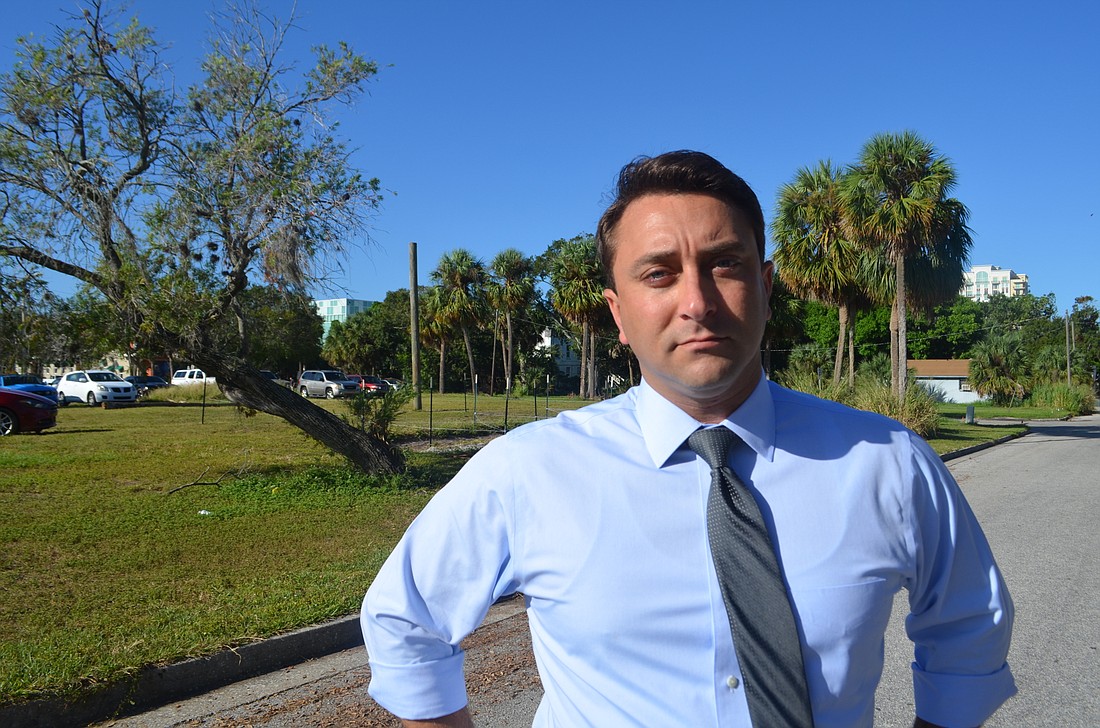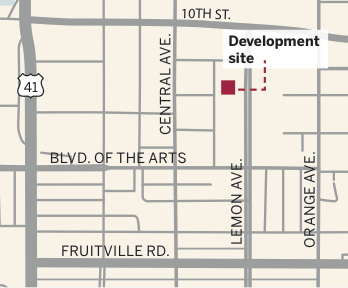- November 23, 2024
-
-
Loading

Loading

As he leads a community planning initiative, Rosemary District property owner Howard Davis has identified a few areas of need for the rapidly developing neighborhood.
One is a shortage of public park space in the area. Another is a lack of affordable housing and diversity of housing options.
So, although Rosemary District stakeholders haven’t had a formal opportunity to discuss the Sarasota Housing Authority’s plans to develop an apartment complex at Ninth Street and Lemon Avenue, Davis is naturally interested in a proposal that would create more than 80 affordable housing units and a half-acre of park land.
“It touches on a couple of key bases for us,” Davis said.
On Oct. 3, the City Commission unanimously approved reallocating $2 million toward the Housing Authority development, called Lofts on Lemon. The authority is seeking more than $15 million in federal funds to construct the $22.6 million project.

The city’s action was a first step toward making the development a reality. The federal funding is allocated through a lottery system, which means the Housing Authority can’t definitively say when the project might move forward. In a best-case scenario, construction might begin in 2019 or 2020, according to William Russell, Sarasota Housing Authority president and CEO.
Still, the plans have generated some excitement in the Rosemary District. It’s also got a champion on the City Commission, with Commissioner Hagen Brody advocating for the potential of the project to address several community needs.
With affordable housing a long-identified priority within city government, Brody said he learned about this project during a tour of Housing Authority properties with Russell. The Housing Authority already had plans to develop the site, but the city had only allocated $1 million toward that effort, leaving the agency short of the necessary amount to compete for grants the Florida Housing Finance Corp. awards.
Because the housing authority had already received tax credits for redeveloping a housing complex at 1912 Orange Ave., Russell said the housing authority feels confident it can complete that work without the $2 million previously allocated toward the project. As a result, Brody placed the funding request on the commission’s agenda.
Brody is positioning himself as a champion for the project. Already, he’s signaled his hopes the county would provide additional funding so the Housing Authority could build even more than the planned 88 apartment units. He suggested a county contribution of $3 million or more could help resolve an ongoing dispute with the city regarding the end of the downtown Community Redevelopment Area.
He’s optimistic others will get on board, allowing the project to move quickly.
“I’m going to shepherd this, hopefully, all the way through to completion,” Brody said. “I’d like to see groundbreaking within the next year or so.”
Brody acknowledged the possibility that budget limitations prohibit the county from dedicating money. If that fails, he said the housing authority could look to local philanthropic organizations to help expand the planned scope.
“With the density, 88 units wouldn’t be doing the property justice.” — William Russell
Russell agreed 88 units was the minimum the Housing Authority hoped to build, and he hopes more could get built. City density regulations allow Rosemary District property owners to build up to 75 units per acre. Russell said the Housing Authority could build as many as 140 apartments in the Lofts on Lemon complex.
“The more funding we can get, the more units we can build on that site,” Russell said. “With the density, 88 units wouldn’t be doing the property justice.”
The housing provided will be a mix of different affordable price-points, Russell said. Most of the units will be offered to residents making 60% or less of area median income — $39,300 for a family of four, or $27,525 for individuals.
Some units will be reserved for those who qualify for Section 8 housing subsidies. Others will be offered at market rate for those making up to 100% of area median income, which is $65,500 for a family of four. Some commissioners questioned the inclusion of market-rate units, but Russell said those would still fill a void.
“The market isn’t building units that people under 100% of median income can afford,” Russell said.